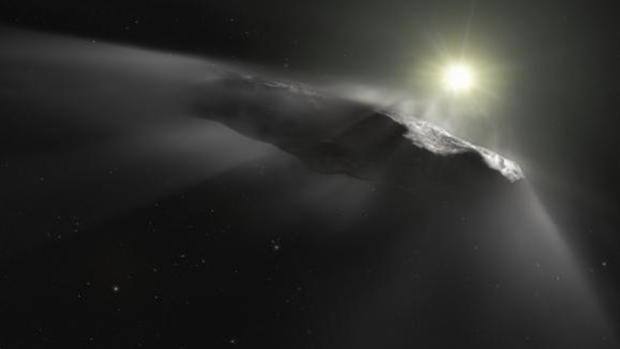 In October 2017, a 300 meter long cigar-shaped space rock captured global attention when it became the first interstellar object detected. Its true nature still provokes rivers of ink, especially due to the unusual statements of Avi Loeb, an astrophysicist at Harvard University, who is convinced that it is a kind of beacon created by an extraterrestrial civilization. Not even two years passed after that first appearance when a second body arrived from another planetary system. It was called 2I/Borisov and turned out to be a comet.
In October 2017, a 300 meter long cigar-shaped space rock captured global attention when it became the first interstellar object detected. Its true nature still provokes rivers of ink, especially due to the unusual statements of Avi Loeb, an astrophysicist at Harvard University, who is convinced that it is a kind of beacon created by an extraterrestrial civilization. Not even two years passed after that first appearance when a second body arrived from another planetary system. It was called 2I/Borisov and turned out to be a comet.
The second intruder confirmed what scientists had suspected for a long time: that these types of visits are repeated. Sometimes, interstellar comets or asteroids can enter the solar system, following orbits very different from those of the objects inside them. However, what is the frequency of these raids?
According to the Interstellar Studies Initiative (i4is), a nonprofit organization dedicated to researching future interstellar flights, approximately seven objects from other stars enter our solar system each year. Their orbits, they say, are predictable as long as they are in our cosmic neighborhood. Researchers from the University of Texas at Austin, Harvard and the Florida Institute of Technology, among other institutions, also participated in the study, published in the scientific pre-publications container Arxiv.org.
From another galaxy
Physicist Marshall Eubanks, lead author of the study, believes that Omuamua and Borisov's discoveries have great value. "The mere fact of proving its existence has had a profound impact, creating a field of study almost out of nothing," he says in statements to 'Universe Today'.
The team calculated the expected speeds of interstellar visitors and how long they should stay in our solar system, using data on the motion and speed of nearby stars from the European Space Agency's (ESA) Gaia telescope. In this way, they concluded that seven travelers from another solar system of a size similar to that of Oumuamua, at least one hundred meters wide, pass within one astronomical unit (the distance between the Earth and the Sun) of our star each year. However, comets like Borisov would be much rarer, appearing once every ten to twenty years.
In addition, they estimated that many of these objects would move at speeds of up to 100 km per second, greater than those of Oumuamua, which was moving at more than 26 km per second, and would arrive from somewhere in our galaxy. Instead, only three objects per century would exceed 530 km per second, which means they could even come from another galaxy. For researchers, this could mean a unique opportunity to study an object from another system and even from outside the Milky Way, something absolutely amazing.
Search and seizure
There are numerous proposals for spacecraft that could encounter this type of objects, such as the Lyra project, presented in 2017 by i4iS, which intended to send a spacecraft to Oumuamua to learn its secrets, although the rock left the solar system shortly after being discovered. . In fact, astronomers had only eleven days to make observations while the rock said goodbye. For its part, the Comet Interceptor of the European Space Agency (ESA) plans to launch a ship in 2029 that would remain 'parked' at a point between the Sun and the Earth waiting for the passage of a long-range comet.
These missions would give scientists the opportunity to closely study objects formed in another star system and get an idea of the conditions that may be found there. "Interstellar objects give us the opportunity to study, and in the future literally touch, exobodies decades before the first possible missions to even the closest stars, such as Proxima Centauri," Eubanks says.
For the authors, it is the best alternative to sending probes to neighboring star systems. That is what the 'Breakthrough Starshot' initiative projects, which at the time obtained the scientific support of the British astrophysicist Stephen Hawking and the economic support of the Russian billionaire Yuri Milner, to send a spacecraft to Alpha Centauri in the future for the first time. , the closest system to the Sun. For its part, i4iS has begun exploring the possibility of sending a small light sail, nicknamed Dragonfly.
Since there is still a long time until a man-made ship reaches another planetary system, these interstellar visitors can put it on a plate for scientists.
